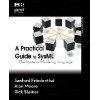- Obecnie brak na stanie



Zestaw AVT do samodzielnego montażu miernika pojemności akumulatorów i pozimu zużycia baterii. AVT5500 B
Brak towaru
Minikomputer wyposażony w układ SoC Rockchip RK3399 (ARM Cortex-A72/ARM Cortex-A53). Komputer został bogato wyposażony, m.in. w złącze Gigabit Ethernet, interfejs mSATA, złącze miniPCIe, USB typu C, podwójny interfejs CSI, itd. Na płytce można uruchomić system Android 6.0 oraz Linux
Brak towaru
Micro serwo GH-S37D o zakresie 90° i masie 3,7 g to lekki i wydajny napęd do modeli RC, konstrukcji halowych, depronowych, projektów edukacyjnych i instalacji wymagających precyzyjnego sterowania przy ograniczonej przestrzeni
Brak towaru
Brak towaru
Brak towaru
Zestaw rozwojowy NVIDIA z układem modulem SoC Jetson TX2 który posiada układ Tegra X2 zawierającym dwa rdzenie Denver, cztery 64-bitowe rdzenie ARM Cortex A57 oraz układ graficzny Pascal składający się z 256 rdzeni wspierających technologię CUDA. Jetson TX2 Development Kit
Brak towaru
(FIT0258) Memory Metal Actuator - NM70R (2P)
Brak towaru
Brak towaru
Brak towaru
Kamera termowizyjna z wyświetlaczem LCD o przekątnej 2,4". Wykonuje pomiar temperatury w zakresie od -10 do 400°C. Uni-T UTi80P
Brak towaru
Brak towaru
Brak towaru
Laserowy czujnik odległości o zasięgu pomiarowym od 0,1 m do 15 m. Komunikuje się przez interfejs UART lub I2C. Waveshare TOF Laser Range Sensor (B)
Brak towaru
Brak towaru
Zestaw AVT do samodzielnego montażu licznika zdarzeń. AVT3188 B
Brak towaru
Brak towaru

